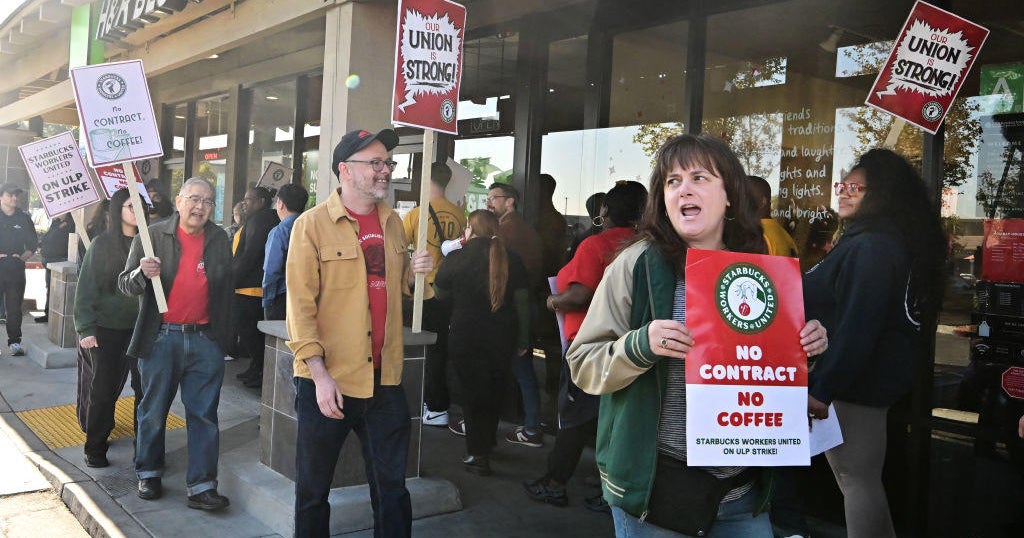U.S. economy grew 2.6% in the 4th quarter, shy of forecasts
The U.S. economy grew at a slower-than-expected rate in the fourth quarter, reflecting a worsening trade deficit and less growth in inventory restocking by companies.
The GDP grew by a solid rate of 2.6 percent in the final three months of last year, slightly below economists' 2.8 percent consensus forecast. Nevertheless, consumer spending picked up at the fastest rate since spring 2016 and home construction rebounded.
The fourth quarter advance in the gross domestic product, the country's total output of goods and services, followed gains of just above 3 percent in the second and third quarters, the Commerce Department reported Friday. The slowdown raises questions about the President Donald Trump's goal of reaching sustained 3 percent GDP growth, which could prove challenging given headwinds such as weak productivity.
"The slight slowdown in GDP growth in the fourth quarter was driven by a huge drag from inventories and net trade which is unlikely to be sustained," wrote Michael Pearce, senior economist at Capital Economics, in a research note on Friday. "Final sales to domestic producers grew at 4.3%, the fastest pace in over three years, suggesting that the US economy had plenty of momentum even before the tax cuts take effect this year."
It appears "nothing can go wrong for the U.S. economy in 2018," Pearce added, although he noted his forecast calls for GDP growth this year of 2.5 percent.
For all of 2017, the economy grew 2.3 percent. That is a significant improvement from a 1.5 percent gain in 2016 but little changed from the modest 2.2 percent average growth rate turned in since the Great Recession ended.
"The current expansion, which began in June of 2009, is now the third-longest in U.S. history (103 months)," noted PNC Financial Service Group chief economist Gus Faucher in a research note. "In a few months it will become the second-longest expansion, surpassing the one that lasted through most of the 1960s (106 months). And it has the potential to become the longest expansion ever, surpassing the 120 month expansion that lasted most of the 1990s."
Economists are looking for even better growth this year, propelled by the $1.5 trillion tax cut that President Donald Trump pushed through Congress in December. The Trump administration contends that its economic program of tax cuts, deregulation and tougher enforcement of trade laws will lift economic growth to sustained rates of 3 percent or better in coming years. In the 8 1/2 years of the current recovery, the growth rate has averaged 2.2 percent, the weakest expansion since the end of World War II.
Trump has said his tax plan will serve as "rocket fuel" for the economy by prompting Americans to spend more and businesses to step up investment.
Economists, however, believe the growth spurt will be short-lived. They are forecasting GDP this year will be boosted by around 0.4 percentage points by the tax cuts and roughly 0.2 percentage points in 2019. Beyond that, many analysts believe rising interest rates will drag growth back down to around 2.2 percent.
"Deficit-financed tax cuts will provide some near-term juice to the economy but it will prove to be temporary because we are already at full employment and the Federal Reserve will respond by raising interest rates move aggressively," said Mark Zandi, chief economist at Moody's Analytics.
Growth was spurred by a 3.8 percent surge in spending by consumers, who account for 70 percent of economic activity. That was up from a 2.2 percent rise in the third quarter and was the fastest quarterly advance since the spring of 2016.
Business investment in new plants and equipment was also strong, rising at a 6.8 percent rate in the fourth quarter, while spending on home construction surged at a rate of 11.6 percent after two quarters of declines.
The areas of strength were offset somewhat by a big increase in the country's trade deficit, which subtracted 1.1 percentage points from growth, and a slowdown in business spending to restock their inventories, which trimmed growth by 0.7 percentage point.



